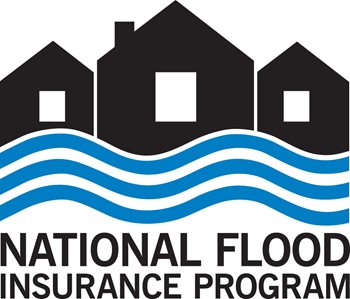An overview of flood insurance, the Flood Insurance Manual, flood insurance statistics, and additional information links

Everyone lives in a flood zone, whether you live in a low-, moderate- or high-risk flood area. You do not need to live near water to be flooded. Floods are caused by storms, melting snow, hurricanes, water backup due to inadequate or overloaded drainage systems, as well as broken water mains. You can protect your home, business, and belongings with flood insurance from the National Flood Insurance Program (NFIP).
Flood insurance is necessary because homeowners insurance typically does not cover flood losses. Anyone who applies for a federally-funded mortgage/loan or refinancing on an existing home in flood-prone areas will be required to carry flood insurance for the life of the mortgage/loan.
All residents in NFIP
participating communities can purchase flood insurance. While it is always a good idea to have flood insurance if you live in a high-risk flood area, it is also a good idea even in lower risk areas, since 25%-30% of flood insurance claims come from areas that are designated low-to-moderate risk areas.
To learn more about your property's flood risk, please view FEMA's
floodplain maps and/or visit
FEMA's FloodSmart website.
Risk Rating 2.0
Risk Rating 2.0 is fundamentally changing the way FEMA rates a property’s flood risk and prices insurance. The updates to the NFIP rating methodology reflect industry best practices and the latest technology in order to make flood insurance rates more equitable and actuarially sound. Currently, FEMA develops rates based predominantly on Flood Insurance Rate Map zone and Base Flood Elevation. With Risk Rating 2.0, which is being implemented in phases beginning in October 2021, flood risk will be determined using a combination of factors and data sources rather than just FEMA flood maps. These factors include multiple flood types (e.g., heavy rainfall, river overflow, coastal storm surge, etc.) and frequencies, distance to a water source, and property characteristics such as first floor elevation, construction and foundation type, and home value.
In NH, of the approximately 7,700 NFIP policies in force, FEMA anticipates that the new system will result in decreased premium costs for 35% of policyholders, slight increases for 58%, and increases of $20 per month or more for the remaining 7%. (See FEMA’s
NH State Profile fact sheet for more details.)
Learn more about
Risk Rating 2.0, including our outreach toolkit, upcoming trainings, and additional resources.
NFIP Desk Reference Guide for State Insurance Commissioners and Others
This
FEMA document pdf file provides an easy-to-understand overview of the NFIP, details about flood insurance including when it is required and what is covered, and other important information that policyholders, local officials, and others should know before, during, and after a flood.
Flood Insurance Reform
To learn more about the implementation of past and recent legislation related to the NFIP please go to FEMA's
Flood Insurance Reform page.
Flood Insurance Manual
The
NFIP Flood Insurance Manual contains the procedures and the rating tables set by FEMA that are used by insurance companies (called
Write-Your-Own companies) to determine a flood insurance premium. The Manual is revised by FEMA in May and October of each year.
For More Information
Visit
FEMA's FloodSmart website to find out about:
- Flood insurance policies and coverage
- Finding an agent in your area
- How to purchase flood insurance
- How to file a claim
Other helpful information about flood insurance can be found at the following links: